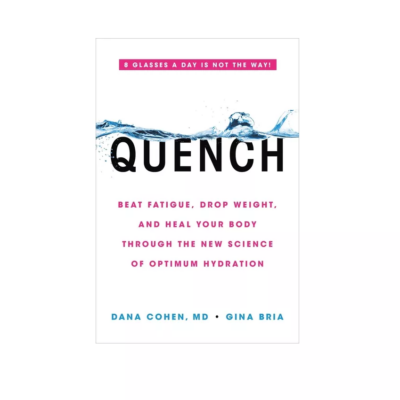In our fast-paced world, where the allure of quick fixes and immediate results often dominates, we tend to overlook the healing powers that exist within us. Increasingly, many are seeking answers in ancient healing practices and innovative approaches to wellness. Among these emerging resources, Lymphatic Enhancement Therapy (LET) is gaining traction for its ability to support our innate healing responses. But does LET live up to its growing reputation?
By utilizing a combination of sound waves, electrostatic currents, and light therapy, LET stimulates the lymphatic system, promoting detoxification and overall wellness. It’s a compelling solution to many of the modern health complications we commonly face—bloating, fatigue, and general sluggishness. These are all signs that our bodies may be out of balance, and that we may need support in returning to a place of optimal well-being. LET offers a powerful option, encouraging the movement of stagnant fluids and metabolic waste while fortifying our immune system.
Featured image from our interview with Janessa Leoné by Teal Thomsen.


Lymphatic Enhancement Therapy: The Treatment You Need to Know About
For a deeper dive, I spoke with Brooke Taylor, founder of The Road in Austin, Texas, who specializes in holistic skincare and Chinese medicine. With her extensive background as an esthetician and global skincare educator, Brooke offers her insights into the transformative potential of LET and its role in our overall health. In our conversation, she sheds light on what’s behind this therapy and explores its benefits, helping us better understand how LET may align with our wellness journeys.

Brooke created The Road in Austin, Texas to share her experience in holistic skincare, acupuncture and Chinese medicine to nurture our own innate healing responses. Previously an esthetician and global skincare educator and brand manager, she pursued her masters in Chinese medicine to help heal others on a deeper level.
What is Lymphatic Enhancement Therapy (LET)?
Taylor describes Lymphatic Enhancement Therapy (LET) as “an innovative approach to lymphatic release.” This cutting-edge therapy utilizes an electronic device that combines various frequencies, including sound waves, electrostatic currents, and light therapy. “By stimulating the lymphatic capillaries, LET enhances fluid movement,” she explains, which is essential for removing metabolic waste and breaking down protein-rich fluids within our tissues.
What are the most common health issues or conditions that can benefit from LET?
LET offers significant benefits for a variety of health issues and conditions. According to Taylor, “LET helps mobilize stagnant hormones and fluid, while also breaking up fibrocystic changes in the tissue.” This is particularly important as it promotes the body’s natural detoxification and healing processes, strengthening not just the lymphatic system, but also the digestive system, liver, and gallbladder.
“LET is considered more powerful than manual lymphatic massage, and is meant to complement the manual technique.” – Brooke Taylor
Taylor emphasizes that “patients often find LET to be an invaluable resource,” especially when they deal with persistent conditions. Many use the therapy to support their recovery from allergies, scar tissue, and post-surgical complications, demonstrating its vital role in enhancing overall health and well-being.
What are some of the biggest misconceptions people have about the lymphatic system and its role in overall health?
Misconceptions about the lymphatic system often stem from a lack of understanding of its critical role in overall health. Taylor points out that “the importance of the lymphatic system lies in its close connection to the immune system,” serving as a vital pathway for immune protection against disease and infection. For too long, this system was overlooked, despite its integral role in initiating immune responses through nodes and vessels that prevent toxin buildup.
Many people may not recognize that symptoms like brain fog, water retention, and fatigue can be indicators of lymphatic stagnation. As Taylor notes, these issues can manifest in various ways, including dry or itchy skin, bloating, and weakened immunity. It’s a reminder of how interconnected our body’s systems truly are.
Additionally, there’s a common misunderstanding of how the lymphatic system operates. Unlike the blood, which circulates in a closed loop through the heart, “the lymphatic system relies on the movement of fascia and muscle to generate flow,” Taylor explains. This makes physical activity essential for lymphatic health. Even simple actions like walking and stretching can significantly enhance lymphatic function. Engaging in deep breathing exercises that activate the diaphragm can also have profound benefits.
Lymphatic Health for the Brain
The importance of lymphatic health, particularly for the brain, is becoming increasingly recognized, especially as we age. Taylor emphasizes that “more focus will be placed on glymphatic health,” referring to the brain’s lymphatic system. “At The Desert Canary, we’ve introduced a specific modality designed to optimize glymphatic function, particularly beneficial after injuries like concussions or strokes.”
In her facial care practice, Taylor observes a consistent mistake: many people apply too much pressure when trying to move lymphatic fluid effectively. “The more superficial the nodes and vessels, the lighter the touch,” she explains. It’s essential to open the pathways in the correct sequence, gently working your way up to encourage fluid flow. For those struggling with puffy eyes or heavy eyelids, she advises focusing on moving lymph back through the scalp and sides of the neck. “This is a big one,” she notes, especially as many people engage in gua sha but often neglect to continue the motion up to the hairline.
Other practices stimulate the lymph, such as massage, dry brushing, guasha, etc. How does LET differ from these other types of lymphatic drainage techniques?
“This is a big distinction of LET,” says Taylor. Unlike techniques that rely solely on manual manipulation—whether through hands, brushes, or gua sha—LET utilizes technology to enhance lymphatic flow. While manual methods often follow specific patterns and directions to encourage fluid movement, practitioners can have varying styles when working with the lymphatic pulse to address stagnation.
In contrast, LET employs frequencies delivered through bulbs to stimulate lymphatic movement, especially in sluggish areas. “The practitioner can often sense if flow is improving with the frequencies by the way they behave on the skin,” Taylor explains. After the affected areas receive LET treatment, the practitioner returns to manual techniques to fine-tune the flow, building upon the initial stimulation provided by the device. “This is a much more powerful way to perform lymphatic massage,” she concludes, illustrating how LET enhances traditional practices for more effective results.
How to Maintain a Healthy Lymphatic System Between Sessions
Movement
Manual DIY therapies like dry brushing and self-massage can effectively support lymphatic health, especially when paired with exercise. “Movement during the day is key when we spend hours sitting,” Taylor notes, emphasizing the importance of standing, stretching, and walking. For those with compromised circulation, she recommends wearing compression stockings, particularly during long flights. “There are lots of new companies on the market making fashionable compression socks to appeal to a younger crowd,” she adds.
Nutrition
Nutrition plays a supportive role as well. Taylor advises avoiding common culprits of poor health, such as seed oils, sugar, and refined foods, to promote lymphatic wellness. She mentions specific tinctures, like Zuma Nutrition Lymphatic Cleanse with cleavers, figwort root, and cayenne, which can enhance hydration. “Staying consistently hydrated with pure water is very important for flow,” she stresses, as the lymphatic system relies on proper hydration to function. To aid absorption, she refers to the book Quench, which suggests consuming fiber-dense foods, like apples, before drinking water. “A sluggish lymphatic system can show up as dry skin, no matter how much water you are consuming,” she explains, underscoring the importance of holistic approaches to lymphatic care.
Self-Care
Sharing her personal routine, Taylor reveals, “I love dry brushing before showering, and I don’t let the water get too hot.” She finishes her showers with cold water and uses a filter from Jolie Skin Co. to remove chlorine and heavy metals. “I also do the Big 6 and wear a compression sock on one leg that has more issues with lymphatic flow,” she says. Taylor also incorporates red light therapy, which is believed to enhance circulation. “One side effect of lymphatic massage therapy is peeing a lot afterward,” she notes with a laugh, as the fluids exit the system as intended. She also practices fascia techniques developed by her colleague Kaita Mrazek, founder of The Listening Movement, to further improve lymphatic efficiency.
Contraindications for LET
“LET isn’t suited for everyone,” Taylor emphasizes. She notes that certain conditions can pose risks, explaining, “It’s not recommended for pregnancy, active cancer, or undiagnosed lumps, tumors, or nodules.” Additionally, she warns against its use for those with implanted medical devices, such as pacemakers, or individuals experiencing congestive heart failure.
“Open wounds, lesions, and skin infections are also contraindications,” she cautions. Taylor encourages open communication with your provider, saying, “Always speak with your practitioner if you’ve had recent injections, breast implants, or any other implants.”
Preparing for Your LET Session
- Clean dry skin is best. Limit or avoid lotions, oils, and thick deodorant.
- Stay well hydrated before and after your session.
Post-Session
- Hydrate, rest, or engage in gentle movement. Don’t overdo it!
- LET works well with manual lymphatic massage therapy, red light therapy, cupping therapy, and acupuncture, which has been shown to enhance outcomes of lymphatic massage to move fluid and de-puff.









